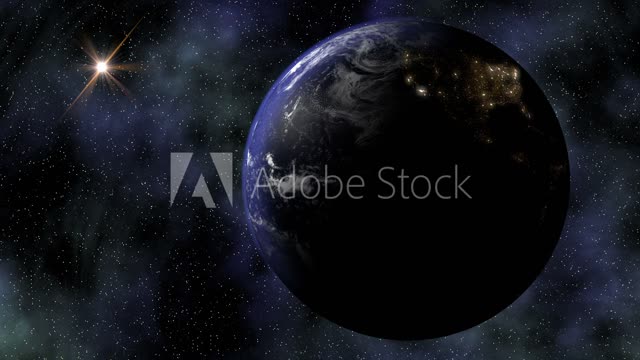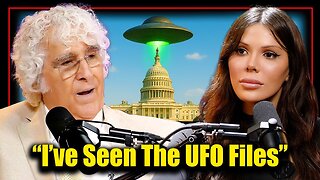Premium Only Content

Scientists Have Spotted the Farthest Galaxy Ever – It May Be Home
TOPICS: AstronomyAstrophysicsBlack HoleHarvard-Smithsonian Center For Astrophysics
By HARVARD-SMITHSONIAN CENTER FOR ASTROPHYSICS APRIL 7, 2022
HD1, an object in red, appears at the centre of a zoom-in image. Credit: Harikane et al.
Shining only ~300 million years after the Big Bang, it may be home to the oldest stars in the universe or a supermassive black hole.
An international team of astronomers, including researchers at the Center for Astrophysics | Harvard & Smithsonian, have spotted the most distant astronomical object ever: a galaxy.
Named HD1, the galaxy candidate is some 13.5 billion light-years away and is described today (April 7, 2022) in The Astrophysical Journal. In an accompanying paper published in the Monthly Notices of the Royal Astronomical Society Letters, scientists have begun to speculate exactly what the galaxy is.
The team proposes two ideas: HD1 may be forming stars at an astounding rate and is possibly even home to Population III stars, the universe’s very first stars — which, until now, have never been observed. Alternatively, HD1 may contain a supermassive black hole about 100 million times the mass of our Sun.
“Answering questions about the nature of a source so far away can be challenging,” says Fabio Pascucci, lead author of the MNRAS study, co-author in the discovery paper on ApJ, and an astronomer at the Center for Astrophysics. “It’s like guessing the nationality of a ship from the flag it flies, while being far away ashore, with the vessel in the middle of a gale and dense fog.
One can maybe see some colours and shapes of the flag, but not in their entirety. It’s ultimately a long game of analysis and exclusion of implausible scenarios.
HD1 is extremely bright in ultraviolet light. To explain this, “some energetic processes are occurring there or, better yet, did occur some billions of years ago,” Pascucci says.
At first, the researchers assumed HD1 was a standard starburst galaxy, a galaxy that is creating stars at a high rate. But after calculating how many stars HD1 was producing, they obtained “an incredible rate — HD1 would be forming more than 100 stars every single year. This is at least 10 times higher than what we expect for these galaxies.”
That’s when the team began suspecting that HD1 might not be forming normal, everyday stars.
“The very first population of stars that formed in the universe were more massive, more luminous and hotter than modern stars,” Pascucci says. “If we assume the stars produced in HD1 are these first, or Population III, stars, then its properties could be explained more easily. In fact, Population III stars are capable of producing more UV light than normal stars, which could clarify the extreme ultraviolet luminosity of HD1.”
A supermassive black hole, however, could also explain the extreme luminosity of HD1. As it gobbles down enormous amounts of gas, high energy photons may be emitted by the region around the black hole.
If that’s the case, it would be by far the earliest supermassive black hole known to humankind, observed much closer in time to the Big Bang compared to the current record-holder.
If that’s the case, it would be by far the earliest supermassive black hole known to humankind, observed much closer in time to the Big Bang compared to the current record-holder.
About Us https://bit.ly/3GUPFOa
Contact: +919942258153 kvk.subadhra@gmail.com Thank You Very Much for Sharing YourValuable Thoughts
-
 1:20:38
1:20:38
BlaireWhite
2 days agoThe Dark Truth About UFOs: Why The Government Is Lying
6.52K7 -
 12:15
12:15
Nikko Ortiz
15 hours agoMonday Gun Fails
50.8K9 -
 2:10:32
2:10:32
Side Scrollers Podcast
18 hours agoStreamer Nearly Beats A Man to Death on Stream + Twitch Viewership PLUMMETS + More | Side Scrollers
10.6K7 -
 13:09
13:09
Forrest Galante
1 day agoWildlife Expert Reacts To Deadly Australian Animal TikToks
84.2K14 -
 23:47
23:47
GritsGG
2 days agoThe Forgotten Best Sniper Support AR!
27.4K4 -
 10:18
10:18
The Pascal Show
17 hours ago $0.44 earned'I WILL NOT GIVE UP ON MY BABY!' Emmanuel Haro's Mom Breaks Silence From Jail?!
10.1K -
 LIVE
LIVE
Lofi Girl
2 years agoSynthwave Radio 🌌 - beats to chill/game to
217 watching -
 2:33:04
2:33:04
Badlands Media
14 hours agoBaseless Conspiracies Ep. 147: Pole Shifts, Plasma Skies, and the Truth About Cataclysms
171K17 -
 4:33:42
4:33:42
Drew Hernandez
10 hours agoISRAEL BOMBS GAZA HOSPITAL ON LIVE TV KILLING AT LEAST 20 INCLUDING JOURNALISTS & CIVILIANS
24K81 -
 2:55:23
2:55:23
TimcastIRL
9 hours agoTrump Orders Specialized National Guard Units To Combat Crime In Cities, Dems Furious | Timcast IRL
220K152